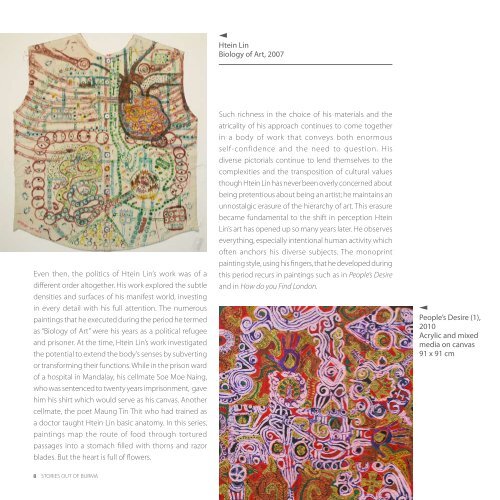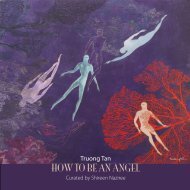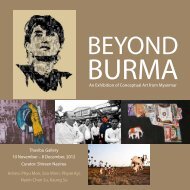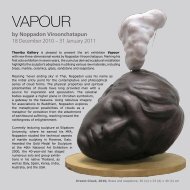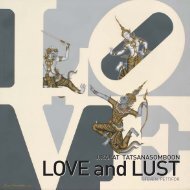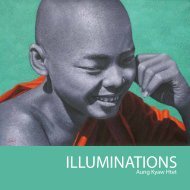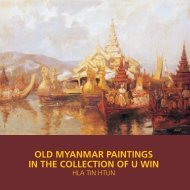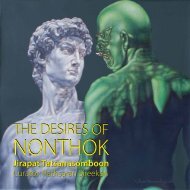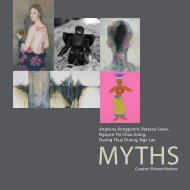CHAW EI THEIN and HTEIN LIN - Thavibu Gallery
CHAW EI THEIN and HTEIN LIN - Thavibu Gallery
CHAW EI THEIN and HTEIN LIN - Thavibu Gallery
You also want an ePaper? Increase the reach of your titles
YUMPU automatically turns print PDFs into web optimized ePapers that Google loves.
Htein Lin<br />
Biology of Art, 2007<br />
Even then, the politics of Htein Lin’s work was of a<br />
different order altogether. His work explored the subtle<br />
densities <strong>and</strong> surfaces of his manifest world, investing<br />
in every detail with his full attention. The numerous<br />
paintings that he executed during the period he termed<br />
as “Biology of Art” were his years as a political refugee<br />
<strong>and</strong> prisoner. At the time, Htein Lin’s work investigated<br />
the potential to extend the body’s senses by subverting<br />
or transforming their functions. While in the prison ward<br />
of a hospital in M<strong>and</strong>alay, his cellmate Soe Moe Naing,<br />
who was sentenced to twenty years imprisonment, gave<br />
him his shirt which would serve as his canvas. Another<br />
cellmate, the poet Maung Tin Thit who had trained as<br />
a doctor taught Htein Lin basic anatomy. In this series,<br />
paintings map the route of food through tortured<br />
passages into a stomach filled with thorns <strong>and</strong> razor<br />
blades. But the heart is full of flowers.<br />
Such richness in the choice of his materials <strong>and</strong> the<br />
atricality of his approach continues to come together<br />
in a body of work that conveys both enormous<br />
self-confidence <strong>and</strong> the need to question. His<br />
diverse pictorials continue to lend themselves to the<br />
complexities <strong>and</strong> the transposition of cultural values<br />
though Htein Lin has never been overly concerned about<br />
being pretentious about being an artist; he maintains an<br />
unnostalgic erasure of the hierarchy of art. This erasure<br />
became fundamental to the shift in perception Htein<br />
Lin’s art has opened up so many years later. He observes<br />
everything, especially intentional human activity which<br />
often anchors his diverse subjects. The monoprint<br />
painting style, using his fingers, that he developed during<br />
this period recurs in paintings such as in People’s Desire<br />
<strong>and</strong> in How do you Find London.<br />
People’s Desire (1),<br />
2010<br />
Acrylic <strong>and</strong> mixed<br />
media on canvas<br />
91 x 91 cm<br />
8 STORIES OUT OF BURMA


